How to Make Potting Soil in 4 Steps – Get It Right the First Time!
-
Ed Malaker
- Last updated:

Potting soil can help your plants grow faster and produce more blooms. It can also help the plants drain better to reduce the risk of root rot. However, it can be expensive, and you might need to drive many miles to get it. Fortunately, you can make it yourself in just a few steps. Keep reading as we provide a step-by-step guide to making potting soil at home, so you can make your indoor or outdoor plants healthier without spending a large amount of money.
Before You Get Started
We recommend getting all the items that you need before you begin so you can complete the project in one go. We also recommend using a large garbage can to store the soil until needed. This recipe makes quite a bit, and you might not need it all at once.
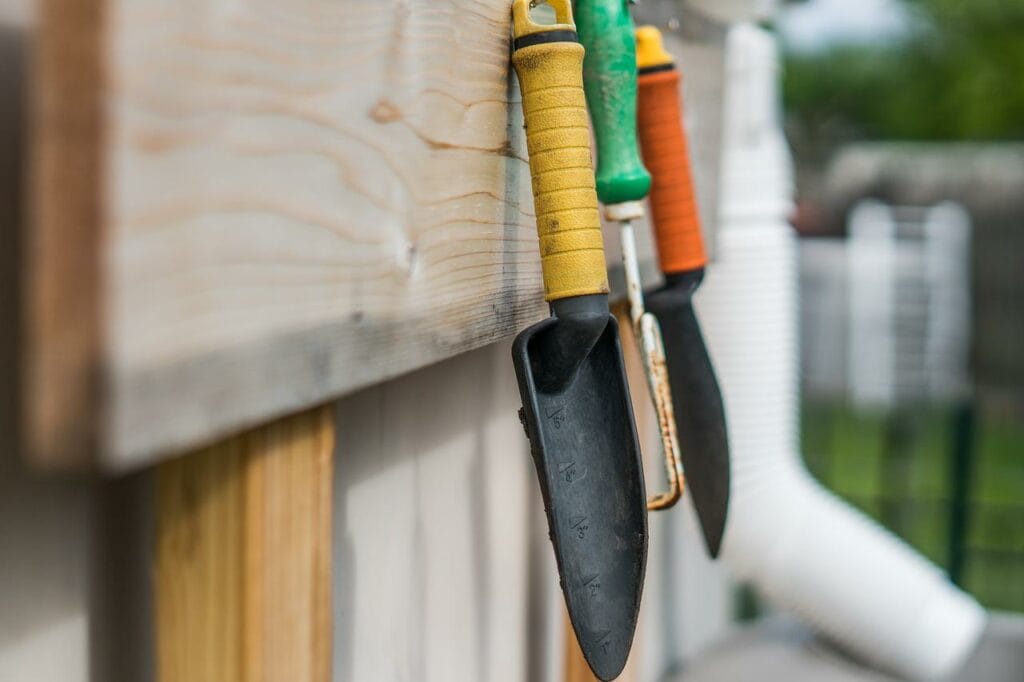
Tools and Materials
- Large garbage can
- Pail or bucket
- Long, lightweight shovel
- 10 quarts of coconut coir or peat moss
- 5 quarts of perlite
- 5 quarts of vermiculite
- 5 quarts of composted cow manure or screened compost
- 2 cups of fine sand
- 2 cups of pelleted time-release fertilizer
The 4 Steps for Making Potting Soil in 4 Steps
1. Determine the Best Fertilizer for Your Plants
The first step in creating good potting soil is considering the kinds of plants that you will grow and choosing the appropriate pelleted time-release fertilizer. Succulents and cacti have different requirements than flowers and vegetables, so read the packaging carefully before purchasing to ensure that the fertilizer will work.
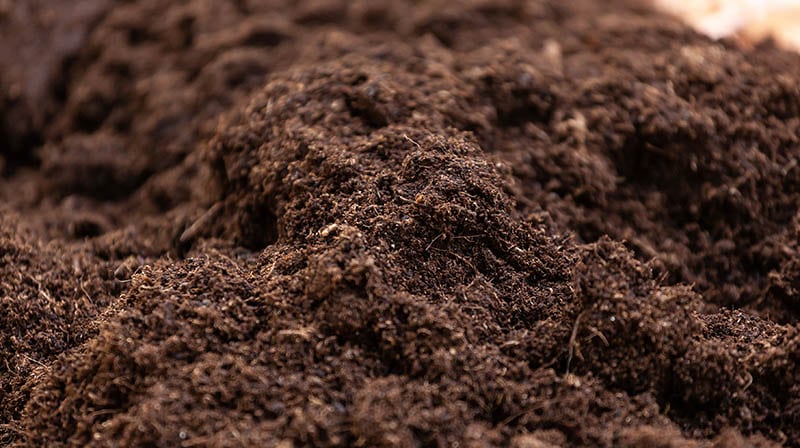
2. Mix Thoroughly
Mix the coconut coir perlite, vermiculite, composted cow manure, and sand thoroughly so there are no clumps of any ingredient. Don’t rush this step, as a good mixture is important for the best results. We recommend mixing it in the large garbage can with a thin, easy-to-handle shovel. Then, pour it out into pots or another garbage can before dumping it back in several times, to help get a better mixture.
Do not add fertilizer unless you are sure that you will use all the potting soil that you make in one go, or it will time-release the nutrients before your plants need them.
3. Fill Your Pots
In this next step, portion out the soil into your pots. If you didn’t add the fertilizer, you will need to mix it thoroughly with the potting soil for each container in the proper amounts for your container size, so read the instructions on the packaging carefully. We recommend using a bucket or pail to mix fertilizer into small amounts of the topsoil that you made before adding it to the containers for your plants.
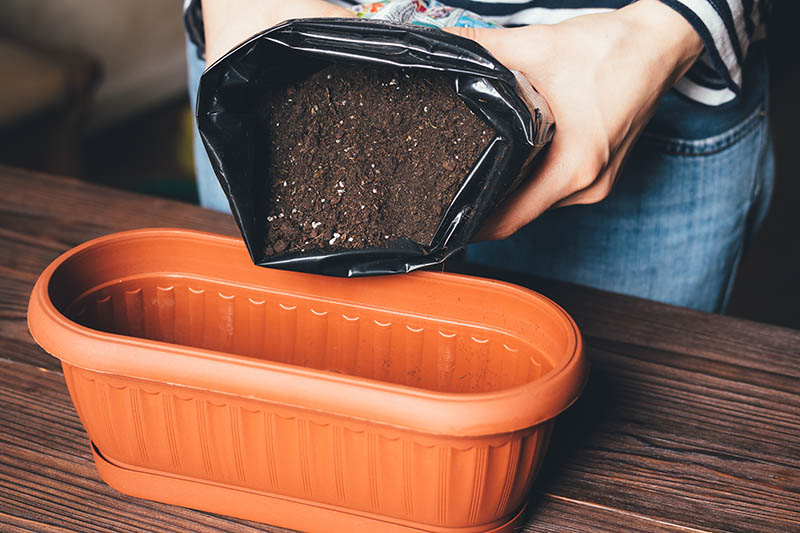
4. Add Your Plants
With the fertilized topsoil added to the containers, you can begin adding your plants and seeds to watch them grow faster and healthier than plants grown in ordinary dirt.
How Many Containers Will This Topsoil Recipe Fill?
The number of containers that this topsoil recipe will fill will depend on the size of the containers. You can expect to fill about five 12-inch hanging baskets or two 14-inch tubs.
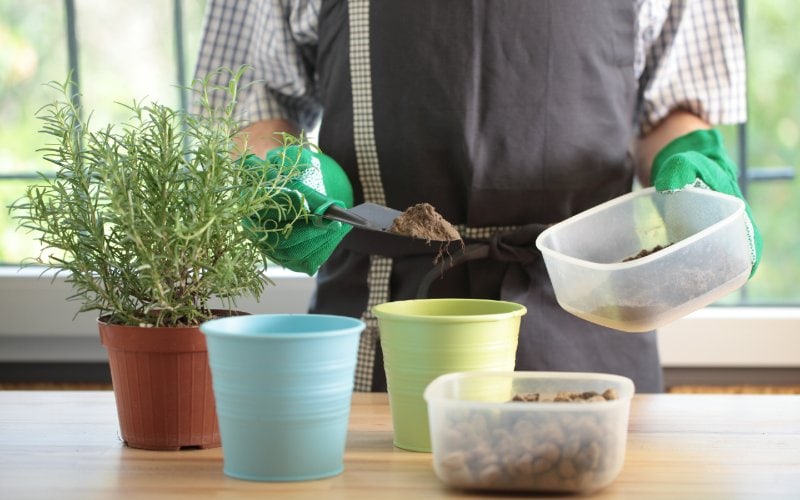
Tips for Maintaining Good Topsoil
- Good topsoil is light and fluffy. Fluffy soil enables more air to move through it, making it easier for the plants to retrieve nutrients. The airy soil also helps promote root growth, so you should never allow it to become too compact.
- Keep track of when you add fertilizer to your soil, as you will likely need to add more every 3 or 6 months, with some brands lasting as long as 9 months. Outdoor gardens typically die off in the fall, but indoor plants can live all year, so they will need more fertilizer. Don’t add in regular dirt, especially in large amounts, as it can form clumps that might inhibit water flow.
- Water the soil frequently, but not so much that it becomes soggy.
How Can I Repair My Garden Soil?
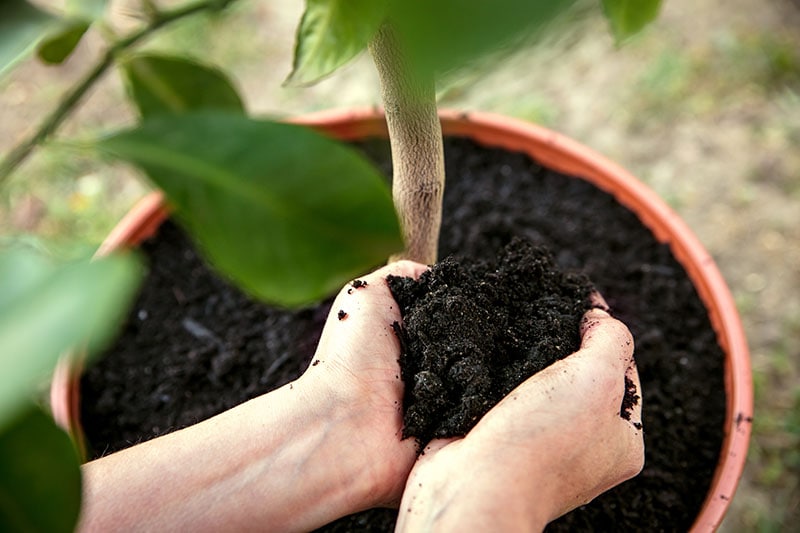
- You can repair your garden soil by breaking it up with a pitchfork and adding in a few of the aforementioned ingredients. These will help keep the soil from clumping back up or becoming too dense for good root growth. They will also help create well-draining soil that will guard against root rot, bacteria growth, and mold.
- Mixing in small broken-up twigs and branches can help aerate the soil and make it better draining. The wood will also add nutrients to the soil as they decompose.
- Mixing in dead leaves in the fall and even grass clippings can be a great way to add nutrients to the soil quickly.
- Many people have successfully used worm castings to promote faster plant growth and better soil structure.
Conclusion
Creating a DIY potting soil is not difficult. It requires mixing common gardening ingredients, like coconut coir, perlite, vermiculite, cow manure, and sand, to produce a light and fluffy medium that plants love to grow in. Your plants will grow faster and healthier with the proper fertilizer, and the soil will drain better, so there is less risk of root rot, bacteria growth, or mold. You can even add the ingredients to your garden soil to help improve your gardening experience.
Featured Image Credit: Andriana Syvanych, Shutterstock
Contents
